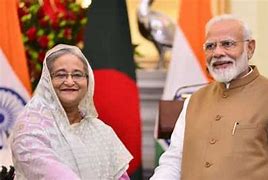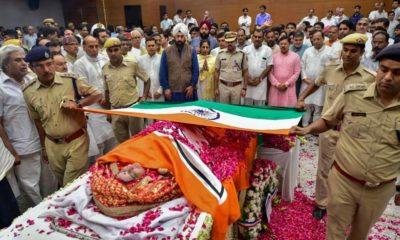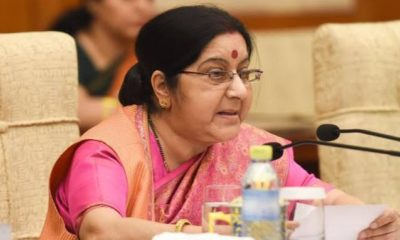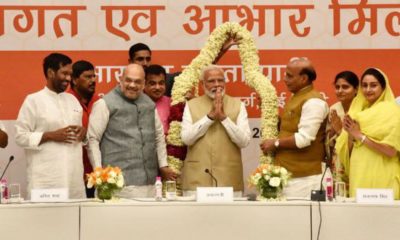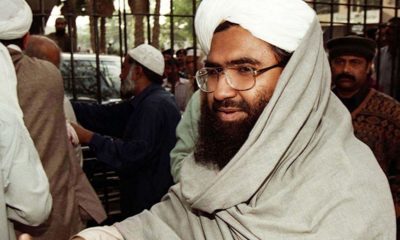Feature
Sushma Swaraj pitches for expansion of UNSC

New Delhi: External Affairs Minister Sushma Swaraj on Sunday strongly pitched for reforms in the United Nations Security Council and pointed out that neither India with nearly a sixth of the world’s population nor the largest continent Africa in terms of number of countries were on board.
She said the United Nations continued to be a “representative of the world order of 1945”.
“A major issue is that of UN Security Council reforms. The Security Council continues to be representative of a world order of 1945. It is inconceivable that the Security Council today does not have any permanent representation from Africa, which is the largest continent (in terms of number of countries),” Sushma Swaraj said while addressing the third India-Africa Editors’ Forum meeting here.
She said it was also incomprehensible that India, which represents almost one-sixth of the world’s population and has all credentials to be a permanent member of the Security Council, was still out of it.
“We all need to work together to remove this anomaly and the media has an important role in this,” she said.
The minister said the world will witness a culmination of global discourse in two other critical areas – climate change and world trade – in the form of COP 21 or Conference of Parties on Climate Change in Paris and the 10th World Trade Organisation ministerial meet in Kenya.
“In both these meetings also, India and Africa and other developing countries will have to work hand in hand to ensure that our development agenda is not affected,” Sushma Swaraj said.
She said the third edition of the India-Africa Forum Summit, to begin here on Monday, was an epoch-making engagement in the journey of strengthening South-South cooperation to promote world peace and prosperity, while accounting for Africa’s own aspirations for growth of pan-African institutions.
“Over the next four days, at the highest political levels, we will endeavour not just to give a new thrust to our age-old partnership but also to develop a new paradigm of cooperation focusing on key areas such as infrastructure, agriculture, energy, innovation and health,” she said.
Sushma Swaraj said that the exercise of strengthening relations between African and Indian news media must be placed on the bedrock of grass-roots empowerment.
“We need new initiatives in the information, communication, media and entertainment sectors. These initiatives should be able to unleash the voices of two of the youngest regions in the world – India and Africa – and harness the power of digital, social and new media platforms to bring about a renaissance of new ideas,” she said.
The minister said that the pan-Africa e-network can be used to host an Africa-India Media Portal and an experts data base of journalists.
“Let me emphasise that our basic approach to our relations in Africa has been one of maximising mutual benefit. We have sought to complement our needs with each other’s strengths,” she said.
She said 2015 has been a historic year for pushing forward South-South cooperation.
“We celebrated the 60th anniversary of Asian-African Conference and the 10th anniversary of the new Asian-African strategic partnership at Bandung (in Indonesia). We worked together in the finalisation of the post-2015 Development Agenda,” she said.
Sushma Swaraj, who earlier inaugurated the India-Africa Friendship Park here, said that saplings of “eternal friendship and mutual cooperation” would have to be nurtured in an environment of mutual understanding.
She said 2015 marked the centenary of the return of Mahatma Gandhi to India, who many say was probably the greatest journalist of his time.
She said the first paper was launched in South Africa, where he took over the editorship of ‘Indian Opinion’ in 1904 and published it in English, Tamil and Gujarati.
“Gandhi-ji looked upon journalism as a means to serve the people,” Sushma Swaraj said.
The minister said it was one’s duty to investigate and analyse underlying agendas even as one reports the facts.
“Even as we report conflict and crisis situations, we have the responsibility to avoid looking at each other through a prism of stereotypes perpetuated by biased reports.”
Entertainment
Meghalaya Reserves Legalized Gambling and Sports Betting for Tourists

The State Scores Extra High on Gaming-Friendly Industry Index
Meghalaya scored 92.85 out of 100 possible points in a Gaming Industry Index and proved to be India’s most gaming-friendly state following its recent profound legislation changes over the field allowing land-based and online gaming, including games of chance, under a licensing regime.
The index by the UK India Business Council (UKIBC) uses a scale of 0 to 100 to measure the level of legalisation on gambling and betting achieved by a state based on the scores over a set of seven different games – lottery, horse racing, betting on sports, poker, rummy, casino and fantasy sports
Starting from February last year, Meghalaya became the third state in India’s northeast to legalise gambling and betting after Sikkim and Nagaland. After consultations with the UKIBC, the state proceeded with the adoption of the Meghalaya Regulation of Gaming Act, 2021 and the nullification of the Meghalaya Prevention of Gambling Act, 1970. Subsequently in December, the Meghalaya Regulation of Gaming Rules, 2021 were notified and came into force.
All for the Tourists
The move to legalise and license various forms of offline and online betting and gambling in Meghalaya is aimed at boosting tourism and creating jobs, and altogether raising taxation revenues for the northeastern state. At the same time, the opportunities to bet and gamble legally will be reserved only for tourists and visitors.
“We came out with a Gaming Act and subsequently framed the Regulation of Gaming Rules, 2021. The government will accordingly issue licenses to operate games of skill and chance, both online and offline,” said James P. K. Sangma, Meghalaya State Law and Taxation Minister speaking in the capital city of Shillong. “But the legalized gambling and gaming will only be for tourists and not residents of Meghalaya,” he continued.
To be allowed to play, tourists and people visiting the state for work or business purposes will have to prove their non-resident status by presenting appropriate documents, in a process similar to a bank KYC (Know Your Customer) procedure.
Meghalaya Reaches Out to a Vast Market
With 140 millions of people in India estimated to bet regularly on sports, and a total of 370 million desi bettors around prominent sporting events, as per data from one of the latest reports by Esse N Videri, Meghalaya is set to reach out and take a piece of a vast market.
Estimates on the financial value of India’s sports betting market, combined across all types of offline channels and online sports and cricket predictions and betting platforms, speak about amounts between $130 and $150 billion (roughly between ₹9.7 and ₹11.5 lakh crore).
Andhra Pradesh, Telangana and Delhi are shown to deliver the highest number of bettors and Meghalaya can count on substantial tourists flow from their betting circles. The sports betting communities of Karnataka, Maharashtra, Uttar Pradesh and Haryana are also not to be underestimated.
Among the sports, cricket is most popular, registering 68 percent of the total bet count analyzed by Esse N Videri. Football takes second position with 11 percent of the bets, followed by betting on FIFA at 7 percent and on eCricket at 5 percent. The last position in the Top 5 of popular sports for betting in India is taken by tennis with 3 percent of the bet count.
Local Citizens will Still have Their Teer Betting
Meghalaya residents will still be permitted to participate in teer betting over arrow-shooting results. Teer is a traditional method of gambling, somewhat similar to a lottery draw, and held under the rules of the Meghalaya Regulation of the Game of Arrow Shooting and the Sale of Teer Tickets Act, 2018.
Teer includes bettors wagering on the number of arrows that reach the target which is placed about 50 meters away from a team of 20 archers positioned in a semicircle.
The archers shoot volleys of arrows at the target for ten minutes, and players place their bets choosing a number between 0 and 99 trying to guess the last two digits of the number of arrows that successfully pierce the target.
If, for example, the number of hits is 256, anyone who has bet on 56 wins an amount eight times bigger than their wager.


